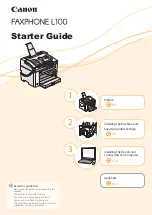
−
100
−
(2) Troubles and corrective measures (With regard to sewing)
Troubles
Cause (1)
Cause (2)
Checking order and adjusting method
1. Thread comes off at the start of sewing
Stitch skipping at the 1st stitch
Length of needle thread remaining at the
needle is not sufficient. (
*
)
Length of remaining bobbin thread is not
sufficient.
Material to be sewn is apt to flop.
*
Excluding in the case where thread is
excessively trimmed short.
Penetration registance of the thread
against the cloth is small.
Tension controller No. 1 provides an
excessive tension.
Tension release timing is excessively
retarded.
Rising amount of tension disk N0. 2 or
auxiliary thread tension (G and Z types) is
small.
Stroke of the thread take-up spring is large.
Tension of the thread take-up spring is low.
Needle thread tension is too high and
thread is extremely stretched.
Resistance of thread draw-out from thread
stand is large. (Coating thread or the like)
Bobbin thread tension is too high.
Clearance between the intermediate
presser and the material to be sewn is
large. (LK-1942)
Stroke of the intermediate presser is large.
Working timing of the intermediate presser
is not adjusted properly.
Decrease the sewing speed at the start of sewing.
Lower the needle count to be used.
Properly adjust the tension controller No. 1.
Properly adjust the position of the tension release notch.
Properly adjust the rising amount of the tension disk No. 2.
Properly adjust the stroke of the thread take-up spring.
Properly adjust the tension of the thread take-up spring.
Properly adjust the needle thread tension.
Use the thread draw-out device. (Provided as standard for G and Z
types)
Properly adjust the bobbin thread tension.
Remove the slack of the material to be sewn.
Properly adjust the height of the intermediate presser.
Properly adjust the stroke of the intermediate presser.
Properly adjust the intermediate presser cam.
















































